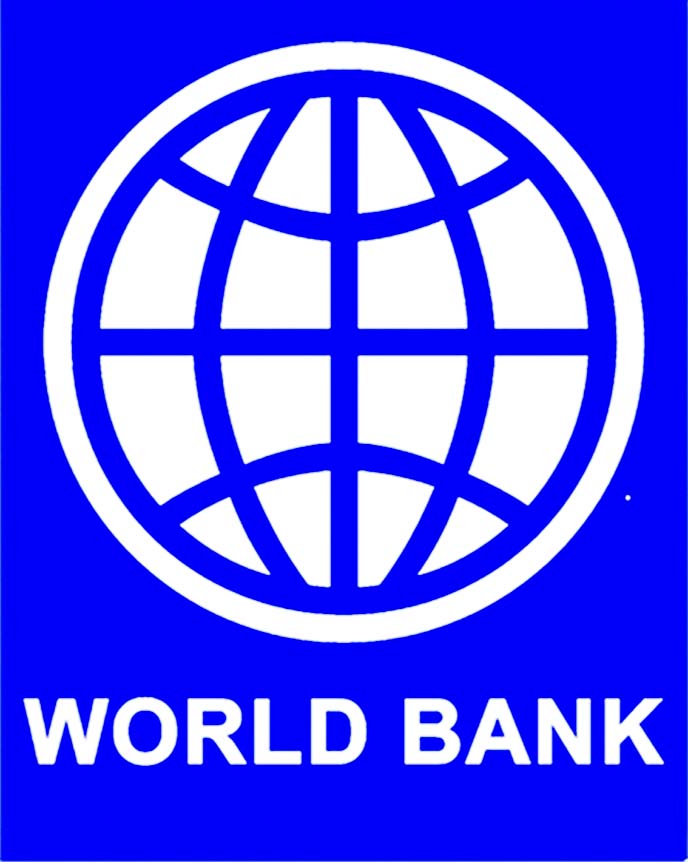
Economic Reporter :
Bangladesh will achieve 6.8 percent GDP growth in 2016-17 financial year (FY17), predicts the World Bank (WB).
“Growth will be sustained at 6.8 percent in 2017. The economy in Bangladesh has weathered global uncertainties well aided by strengthening investment and a recovery of exports,” the WB said in its twice-a-year report in the South Asia Economic Focus, a World Bank press release said.
The report titled “Globalization Backlash” observed that infrastructure gaps and inadequate energy supply, combined with the high cost of doing business, remain the main obstacles to the realization of Bangladesh’s growth potential.
The report also forecast that Bangladesh’s GDP growth will stand at 6.4 percent in FY18 and 6.7 percent in FY 19.
The report, however, confirmed that South Asia remains the fastest-growing region in the world, gradually widening its lead relative to East Asia.
“Regional GDP growth is expected to rise from 6.7 percent in 2016 to 6.8 percent in 2017, and 7.1 percent in 2018,” the report added.
It claimed that global integration has been good for economic development and poverty reduction. But the region would be resilient to higher trade barriers in advanced economies.
“It would even stand to gain if selective protectionism resulted in trade diversion away from established suppliers. South Asian economies also stand to gain from the observed recovery in advanced economies, which are their largest export markets,” said the report.
The report quoted WB’s South Asia Region Chief Economist Martin Rama as saying: “To make the most of this export opportunity, countries in the region should continue to focus on polices that promote economic growth.”
He said, “A survey of South Asian experts conducted for this report reveals a strong consensus on the need to promote human capital accumulation, investments in infrastructure, and a more business-friendly environment.”
South Asia Region Vice President Annette Dixon said “Simulations on the impact of hypothetical new trade barriers show that South Asia is not only resilient to a potential rise in protectionism but could possibly even gain from it in some circumstances.”
“Advanced economies are recovering and could see faster growth that will likely increase demand for South Asian product,” Dixon said, adding: “The region should seize this opportunity to diversify its exports and enhance its supply response.”
Bangladesh will achieve 6.8 percent GDP growth in 2016-17 financial year (FY17), predicts the World Bank (WB).
“Growth will be sustained at 6.8 percent in 2017. The economy in Bangladesh has weathered global uncertainties well aided by strengthening investment and a recovery of exports,” the WB said in its twice-a-year report in the South Asia Economic Focus, a World Bank press release said.
The report titled “Globalization Backlash” observed that infrastructure gaps and inadequate energy supply, combined with the high cost of doing business, remain the main obstacles to the realization of Bangladesh’s growth potential.
The report also forecast that Bangladesh’s GDP growth will stand at 6.4 percent in FY18 and 6.7 percent in FY 19.
The report, however, confirmed that South Asia remains the fastest-growing region in the world, gradually widening its lead relative to East Asia.
“Regional GDP growth is expected to rise from 6.7 percent in 2016 to 6.8 percent in 2017, and 7.1 percent in 2018,” the report added.
It claimed that global integration has been good for economic development and poverty reduction. But the region would be resilient to higher trade barriers in advanced economies.
“It would even stand to gain if selective protectionism resulted in trade diversion away from established suppliers. South Asian economies also stand to gain from the observed recovery in advanced economies, which are their largest export markets,” said the report.
The report quoted WB’s South Asia Region Chief Economist Martin Rama as saying: “To make the most of this export opportunity, countries in the region should continue to focus on polices that promote economic growth.”
He said, “A survey of South Asian experts conducted for this report reveals a strong consensus on the need to promote human capital accumulation, investments in infrastructure, and a more business-friendly environment.”
South Asia Region Vice President Annette Dixon said “Simulations on the impact of hypothetical new trade barriers show that South Asia is not only resilient to a potential rise in protectionism but could possibly even gain from it in some circumstances.”
“Advanced economies are recovering and could see faster growth that will likely increase demand for South Asian product,” Dixon said, adding: “The region should seize this opportunity to diversify its exports and enhance its supply response.”

